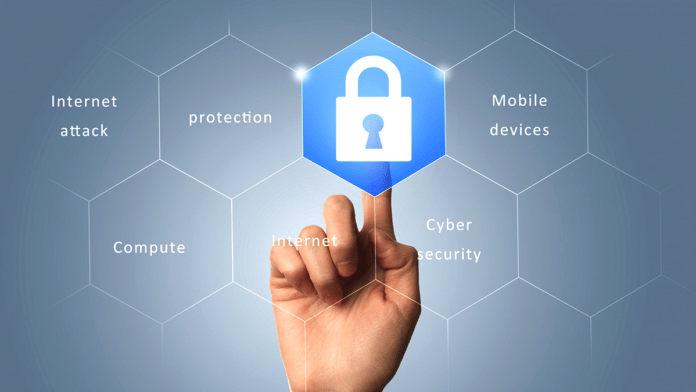This article discusses the crucial need for cyber incident plans and the risks brought about by generative AI in today’s digital landscape. It emphasises the importance of reducing attack surfaces and the role of AI in enhancing cybersecurity. Strategies like collaboration, employee education, implementing zero-trust security, regular testing, and securing third-party and digital supply chains are highlighted. The piece underscores the significance of staying informed about generative AI risks and leveraging AI to bolster cybersecurity, thereby enabling organisations to robustly defend against evolving cyber threats.
- Having a cyber incident plan is crucial for organizations to respond effectively to cyberattacks and comply with regulations.
- Generative AI poses risks by creating realistic fake content that can deceive users and compromise an organization’s security.
- Organizations can reduce the risks of generative AI by collaborating with cybersecurity experts, educating employees, using security solutions, implementing zero-trust security, and regularly testing security measures.
Securing Cyberspace in the Age of Generative AI and Minimizing Attack Surfaces
I recently attended the Canalys Forum EMEA, where I was part of a panel discussion on the topic of neutralizing attack surfaces. The forum highlighted two key themes: the importance of having a cyber incident plan in place and the emergence of generative AI and its implications for cybersecurity and cybersecurity solutions. In this article, we will explore the significance of minimizing attack surfaces and the role of generative AI in securing cyberspace.
The Need for a Cyber Incident Plan
In today’s digital landscape, it is not a matter of if an organization will experience a cyberattack, but rather how they respond when it happens. The ability to bounce back quickly from an attack sets organizations apart. A cyber incident response plan is crucial in enabling organizations to respond swiftly and effectively to a cyberattack, thereby limiting the damage caused.
Having a cyber incident plan is not only essential for effective response but also for compliance with legal and regulatory requirements. Organizations may be mandated by regulatory bodies such as the National Cyber Security Centre (NCSC) in the UK, ANSSI in France, or BSI in Germany to develop and implement a cyber incident plan. Compliance with regulations such as GDPR, NIS2, or PCI DSS also necessitates the presence of an incident response plan. Failure to comply with these regulations can result in fines and legal consequences.
While planning for the worst may seem pessimistic, having an effective strategy in place can help organizations maintain customer trust, reduce downtime, and minimize financial losses incurred due to an attack.
Generative AI and its Risks
Generative AI is a powerful technology with revolutionary potential across various industries. However, it also poses significant risks to organizations, particularly in terms of expanding digital attack surfaces with new and sophisticated AI cyberattacks. The UK’s National Cyber Security Centre (NCSC) has predicted that AI will have a profound impact on the threat landscape, as more state and non-state actors gain access to previously unavailable capabilities and intelligence.
One of the most concerning risks associated with generative AI is its ability to create realistic-looking fake content that can deceive an organization’s weakest security link – its people. This fake content can be used to trick users into revealing sensitive information or taking actions that compromise an organization’s security.
Reducing Generative AI Risks
To mitigate the risks posed by generative AI to attack surfaces, organizations need to stay informed about the latest attack vectors and take proactive steps to protect themselves. Here are some ways to reduce the risk of AI-powered attacks:
1. Collaboration: Engage with cybersecurity experts and peers to share knowledge and insights. Collaboration can help organizations stay informed and agile in the face of evolving threats.
2. Employee Education: Educate employees about the risks associated with generative AI and the importance of strong passwords, multi-factor authentication, and other security best practices. Implementing a continuous security awareness program is crucial to strengthen the human element of cybersecurity.
3. Security Solutions: Utilize security solutions that can detect and block generative AI-powered attacks. These solutions leverage AI and machine learning to identify and mitigate emerging threats.
4. Implement Zero-Trust Security: Adopt a zero-trust security model that assumes no trust by default. This approach requires verification and authentication for all network access, even from trusted third parties.
5. Regular Testing: Continuously test and evaluate security measures to identify vulnerabilities and ensure the effectiveness of security solutions. Testing can help organizations stay one step ahead of cyber threats.
Using AI to Enhance Cybersecurity
While generative AI presents risks, it can also be harnessed to strengthen cybersecurity solutions. Here are some ways AI is being used to reduce threats to attack surfaces:
1. Improving Security Solution Accuracy: AI can train security solutions to detect new and emerging threats, enhancing their accuracy and effectiveness.
2. Developing New Security Tools and Techniques: AI can develop innovative security tools and techniques to help organizations protect themselves from evolving cyber threats.
3. Automating Security Tasks: AI can automate routine security tasks, freeing up security teams to focus on more complex and strategic initiatives.
Securing Third-Party and Digital Supply Chains
When addressing attack surface reduction, it is crucial to secure third-party and digital supply chains that contribute to the overall attack surface. Here are some measures to consider:
1. Vendor Risk Assessments: Conduct thorough risk assessments before onboarding new third-party vendors or suppliers. Assess their security practices, compliance with standards, and track record in handling data securely.
2. Regular Audits and Due Diligence: Perform regular audits and due diligence on existing third-party vendors to ensure they maintain security standards over time. This helps protect the digital supply chain.
3. Data Classification and Protection: Clearly define how sensitive data will be classified, handled, and protected when shared with third-party vendors. Implement robust encryption and access controls to safeguard data.
4. Access Control Management: Limit access to systems and data to only those individuals or entities that require it. Implement strong access controls, including multi-factor authentication, for third-party vendors.
5. Exit Strategy: Plan for the end of the relationship with third-party vendors. Ensure that data is securely returned or deleted, and access is revoked when the relationship ends.
Conclusion
In the age of generative AI, securing cyberspace and minimizing attack surfaces are critical for organizations to protect themselves from evolving cyber threats. By having a cyber incident plan in place, staying informed about generative AI risks, and leveraging AI to enhance cybersecurity, organizations can strengthen their defence against cyberattacks. Additionally, securing third-party and digital supply chains is essential to reduce vulnerabilities and protect the overall attack surface. Collaboration, education, and innovation are key to thriving in a world where attack surfaces are under constant pressure.
FAQ
Q: Why is having a cyber incident plan important?
A: Having a cyber incident plan is crucial for organizations to respond swiftly and effectively to a cyberattack, thereby limiting the damage caused. It also helps organizations maintain customer trust, reduce downtime, and minimize financial losses incurred due to an attack.
Q: Are there any legal requirements for having a cyber incident plan?
A: Yes, organizations may be mandated by regulatory bodies such as the National Cyber Security Centre (NCSC) in the UK, ANSSI in France, or BSI in Germany to develop and implement a cyber incident plan. Compliance with regulations such as GDPR, NIS2, or PCI DSS also necessitates the presence of an incident response plan.
Q: What risks does generative AI pose to organizations?
A: Generative AI poses significant risks to organizations, particularly in terms of expanding digital attack surfaces with new and sophisticated AI cyberattacks. It can create realistic-looking fake content that can deceive an organization’s people, trick them into revealing sensitive information, or compromise security.
Q: How can organizations reduce the risks associated with generative AI?
A: To reduce the risks posed by generative AI, organizations can collaborate with cybersecurity experts and peers to stay informed and agile in the face of evolving threats. They can also educate employees about the risks, implement security solutions that can detect and block generative AI-powered attacks, adopt a zero-trust security model, and regularly test and evaluate security measures.
Q: How can AI be used to enhance cybersecurity?
A: AI can be used to improve the accuracy of security solutions by training them to detect new and emerging threats. It can also develop innovative security tools and techniques and automate routine security tasks, freeing up security teams to focus on more complex and strategic initiatives.
Q: Why is securing third-party and digital supply chains important?
A: Securing third-party and digital supply chains is crucial because they contribute to the overall attack surface. By conducting thorough risk assessments, performing regular audits and due diligence, implementing data classification and protection measures, managing access control, and planning for the end of the relationship, organizations can reduce vulnerabilities and protect their attack surface.
Q: What are some key measures for securing third-party and digital supply chains?
A: Key measures for securing third-party and digital supply chains include conducting risk assessments, performing regular audits and due diligence, implementing data classification and protection measures, managing access control, and planning for the end of the relationship with third-party vendors.













